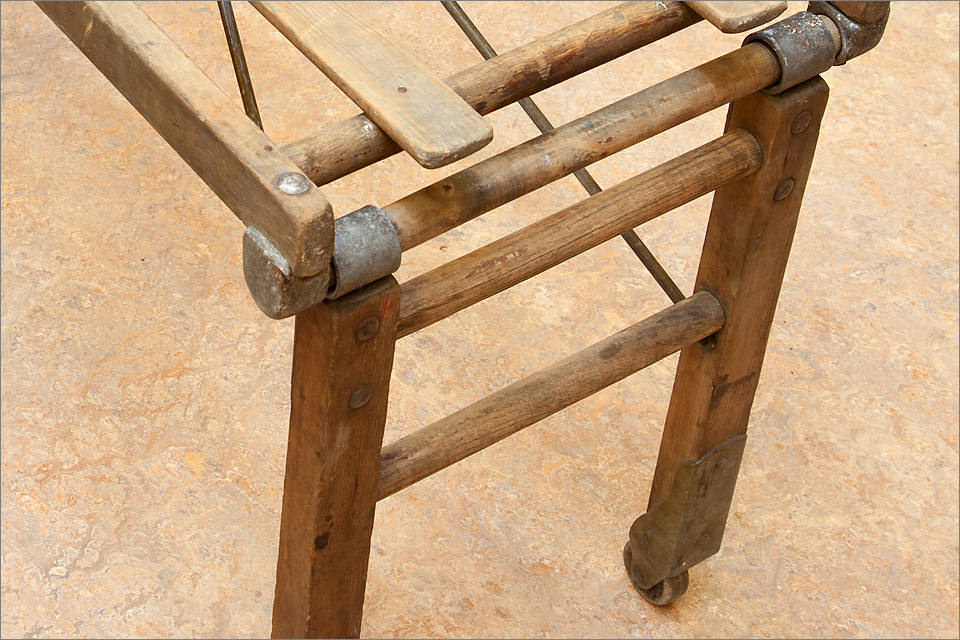
Several weeks ago, I stopped in at a garage sale at a local church near my home. The sale is held twice a year – once in spring and again in autumn. All of the items are donated. Nothing is priced, and if you find something you like, you simply make an offer. If it’s a reasonable amount, it’s yours.
There were a number of tables set up outside the church, with everything from tools to kitchen appliances and knick-knacks on display. I rummaged through several boxes of books, then made my way over to the used furniture section, where an elderly gentleman had just negotiated a price on a nice, vintage steamer trunk. While helping the man load his purchase into the back of his pick-up, I noticed something lying unassembled on the ground, close by. It was made of wood – oak and pine, with metal fittings. You could tell it had some age, but what was it? Someone thought it was an old stretcher, maybe from World War One. I wasn’t so sure and asked whether I could set it up. By this time, several more people had gathered around and were providing advice with its assembly and trying to guess what the object might be.
It only took a minute or two before the piece was standing upright. Lo and behold, it was a wooden bench with hinged folding legs, fitted with castors. Stenciled along the front of the frame was the name of the manufacturer – “Beatty Bros. Fergus, Canada.” The other side read, “BT Tub Bench Patented 1923.” The mystery was solved – it was a folding washtub bench. Rather than being a stretcher used to carry wounded soldiers off the battlefield, it was used in the kitchen to battle dirty laundry. You can’t get any more utilitarian than that! I was interested in the bench and upon negotiating a price, it was in the back of my pick-up.
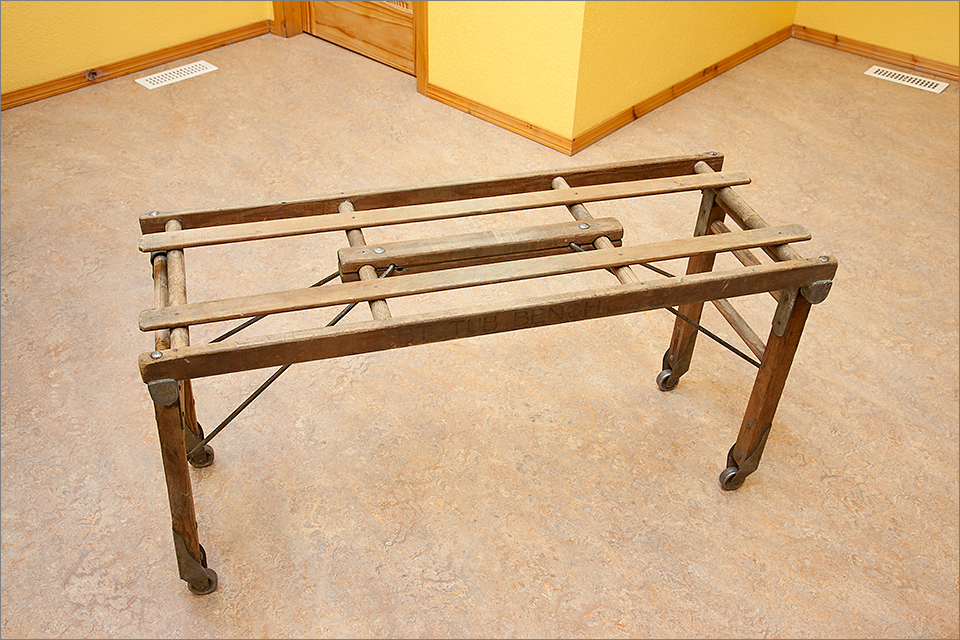
While trying to decide what I was going to do with the tub bench, I went online to see what I could learn about the company that made it.

Beatty Brothers Limited was founded in Fergus, Ontario in 1874 by brothers George and Matthew Beatty. In the beginning, they manufactured farm implements, barn and stable equipment, churns, ladders, and agricultural machinery. By the early 1910s, the company had expanded its product line to include washing machines. In the 1920s, they were selling their products throughout Canada, the United Kingdom, Australia, and New Zealand. During this time, Beatty Brothers were constantly promoting their electric washers by offering incentives, consisting of free merchandise and interest-free payments. With the purchase of a $160 Beatty washer, with only $1 down and 16 months to pay, you could choose four additional washday appliances at no extra charge. Among the free choices were an ironing board, electric iron, clothes rack, clothes basket, step ladder, ceiling dryer, rinsing tub, and a tub bench. The extras alone were worth $18, with the tub bench valued at a retail price of $7.50. They even had miniature versions of these premiums to give to the “kiddies.”
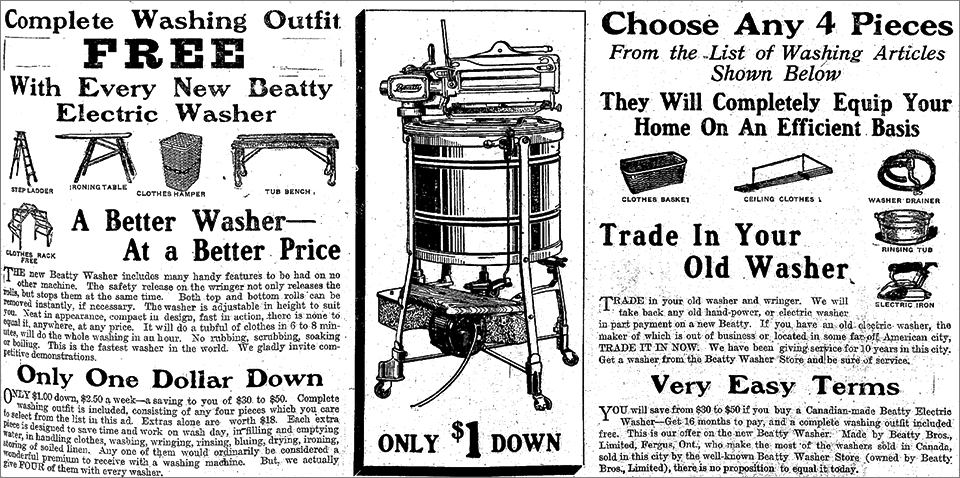
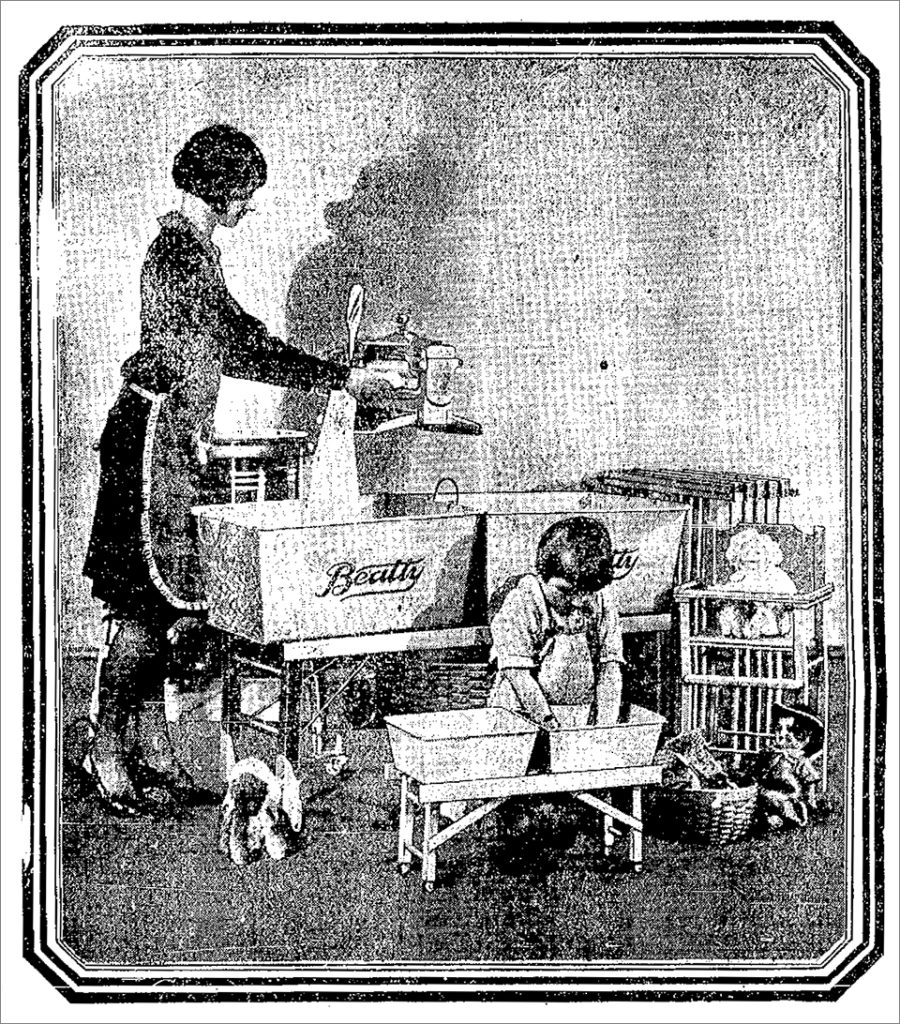
Mother and daughter working at their tub benches
The company that George and Matthew Beatty founded in 1874 remained in operation until 1969, when it amalgamated with General Steel Wares to form GSW Limited.
The tub bench I acquired a few weeks ago was likely a freebie for someone in the 1920s. It might have come from a Beatty retailer in Crowsnest Pass such as Arthur E. Ferguson of Blairmore. Along with being an agent for Beatty washers, Ferguson was also the manager of Crow’s Nest Undertaking Company, with parlors in Blairmore and Coleman.
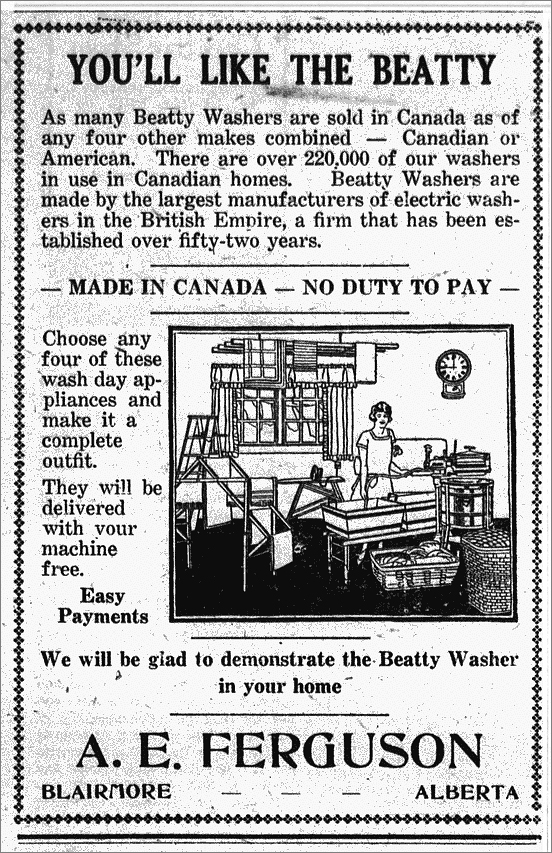
Blairmore Enterprise – 1927
Once I removed the decades-old dust and dirt from the bench and applied a couple of coats of tung oil to the wood, I realized it could easily be repurposed into a coffee table. All it needed was a piece of glass for the top and a place to set it up at home.
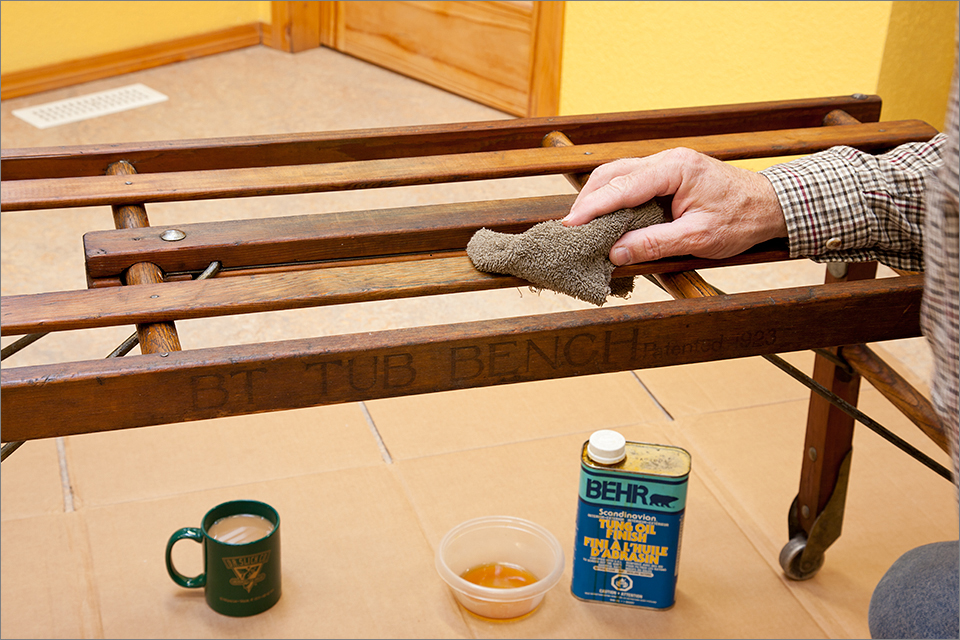
While working on this project, I kept thinking of the expression, “What’s old is new again.” Sometimes, you just have to figure out what the “old” is before you can turn it into something new.
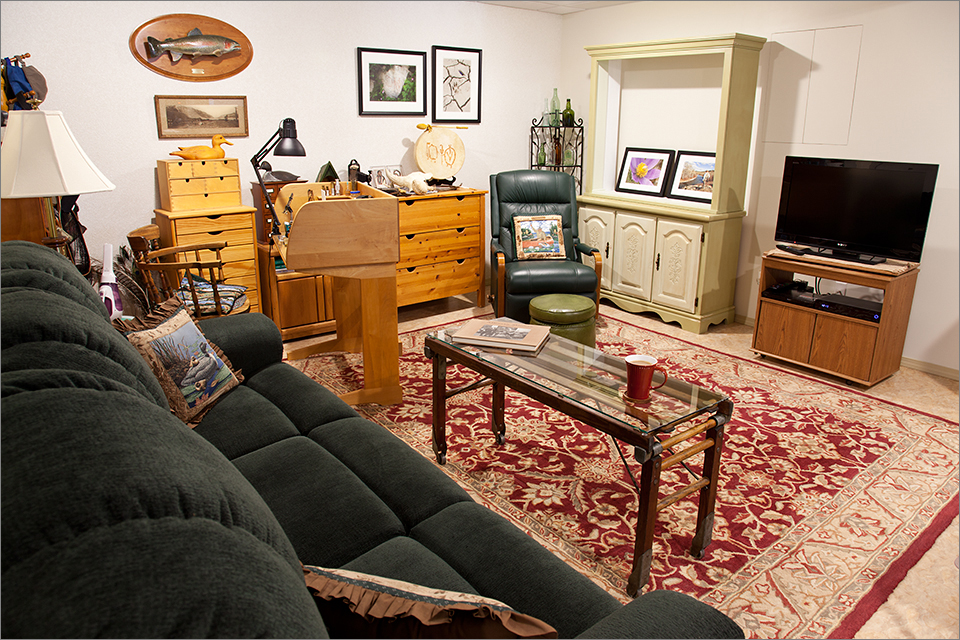
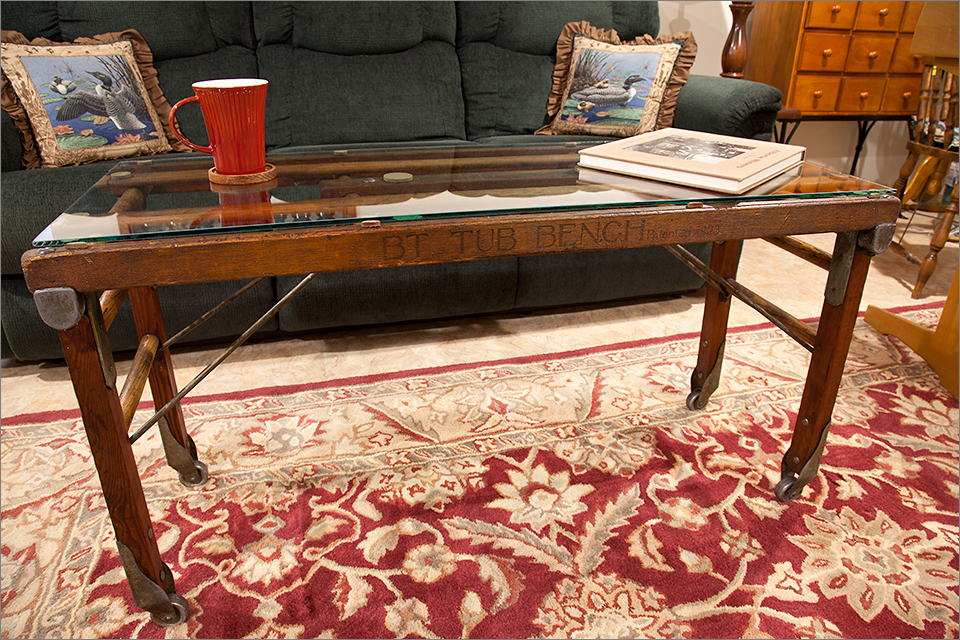
Article References & Credits
The University of Alberta – Peel’s Prairie Provinces (Blairmore Enterprise)
Digital Newspaper Archives (Lethbridge Herald, Winnipeg Free Press)
Wikipedia
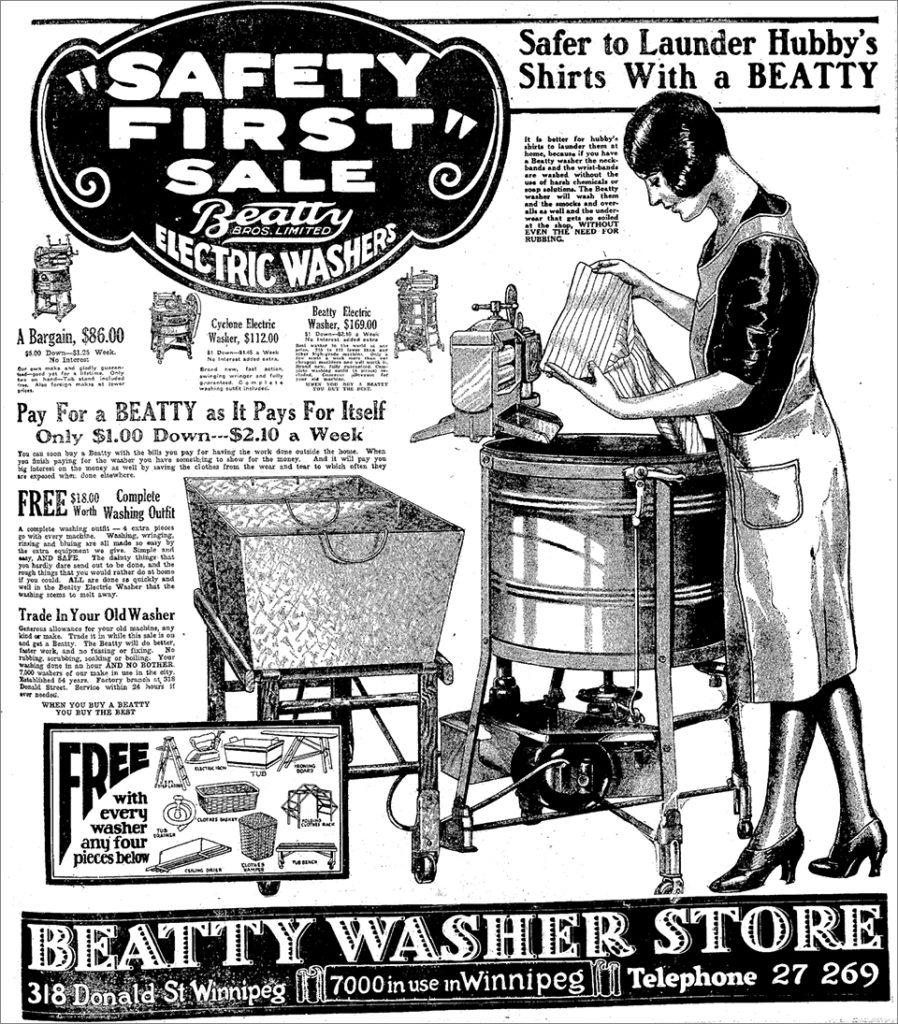
Winnipeg Free Press – 1928
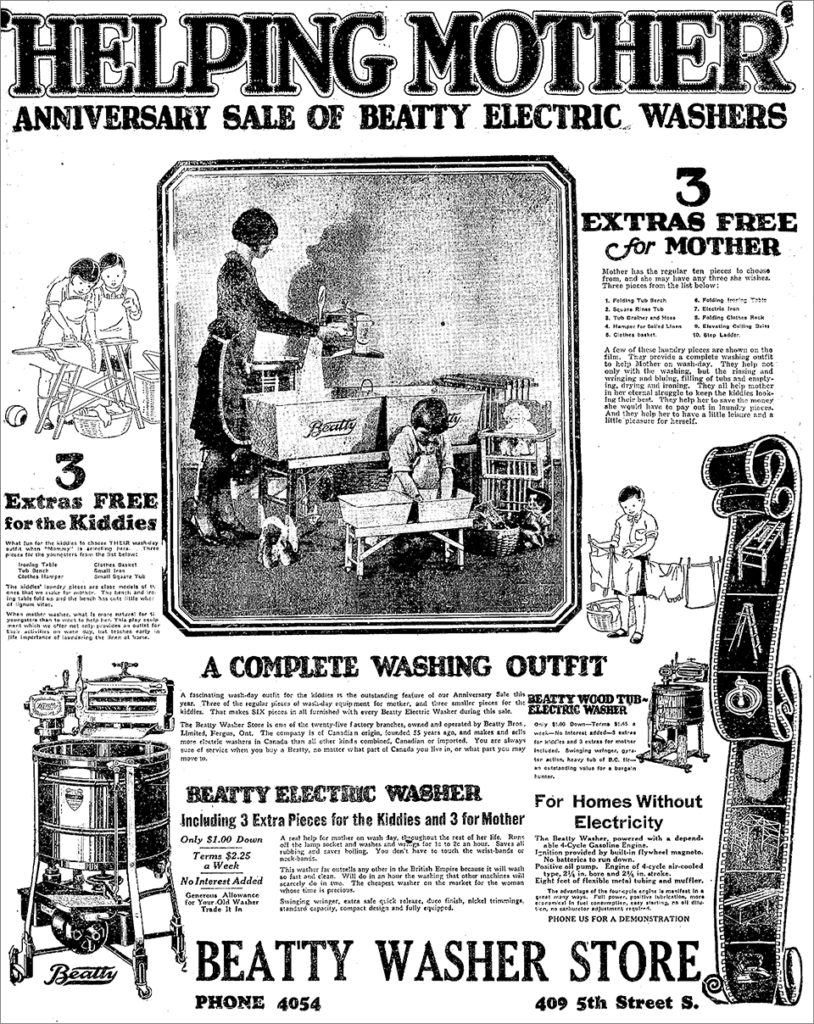
Lethbridge Herald – 1929


17 Comments
Wow! This is such good information to find! I lived with a geologist named Donald Hattie in New Brunswick and he has one! Sadly he has passed and the family will be taking it and selling it off but it was very interesting to learn about it, thank you!
Hi Jessica,
The tub benches are pretty neat. Doing laundry was a lot more back in the day! Thanks for your comments!
Just looking at your BT bench and wondering if mine was assembled incorrectly. My legs splay out. The metal trim is on the outside at the top of the legs and that’s how I noticed ours differed. The ads tell it correctly of course. It looks quite normal for the legs to splay out slightly but that’s because I’ve only seen it that way!
Interesting observation. Thanks for posting all the ads you found.
Hi Liza,
The legs of the BT bench should be straight. Not sure why yours splay out.
Hi Liza,
I’m not sure why the legs on your bench are splayed. They should be straight.
I have one of the benches from the Edmonton area.
Hi Nicole,
That’s great! I suspect there are a bunch of these stored in basements and garages all over the place. They made a lot of these, back in the day.
Just bought one of these beauties from a buy and sell in Haliburton Ontario. I will try the tung oil. I am interested to know if anyone has done anything with the galvanized steel.
Hi Kim,
When I was working on my tub bench, I found information online on removing oxidation (“white rust”) from galvanized steel. I didn’t want to take the chance of doing something to damage the metal and decided to leave it as it was. I used an old toothbrush with warm water and soap to clean the wood and metal. There was not a lot of white rust on mine and most of it was removed with the brush. I applied a small amount of sewing machine oil on the metal with a rag, then wiped it off. The metal has a tarnished appearance but I like that. The tung oil made a huge difference. It darkened the wood and really brought out the wood grain. I used 2 or 3 coats of oil. Hope your project turns out well. Thanks for commenting!
Vic,
Fantastic idea regarding the glass top. I have the identical stand, unfinished, that I use at the foot of my bed . A glass top would significantly improve it’s usefulness. What thickness of glass did you choose and what type of clips are you using to hold the glass?
Ken
Hi Ken,
When I got the tub bench, the wood was quite weathered and dry. The tung oil restored it and brought out the grain, especially in the oak.
I used 1/4 inch glass and had the edges beveled. At first, I was going to use tempered glass but in the end went with regular glass. There’s not much chance of it breaking in my house. To prevent the glass from moving or sliding off the bench, I attached round rubber pads (3M Scotch non-slip gripping pads) to the underside of the glass. I picked these up at Walmart. There were three sizes of beige-colored, self-adhesive pads in the package. I used all three sizes. They are just the right thickness, to keep the glass from making contact with the bolt heads protruding from the top of the bench. The pads are round, and to keep the ones on the outside edges from sticking out, I cut them flush with the glass. Altogether, I used about a dozen pads and they hold the glass firmly in place. I could have attached the pads directly to the wood but thought it would be easier to remove them from the glass, should that be required at some point. I’m going to get a piece of shelving to put across the bottom rungs of the legs. This way, I’ll have another shelf to use for something. Hope this helps. Thanks for commenting!
That’s a very nice score, Vic. You’ve got a good eye. I especially like the way that doing the laundry was depicted in the ads with the “laundry person” ( I’m striving for political correctness here ) wearing a nice dress and high heels. My, my. You’ve come a long way baby!
Hi Bob,
I thought the tub bench was a great find. I’d never seen one before and didn’t know what I was going to do with it until I finished cleaning it up. The vintage ads of women doing laundry are pretty stereotypical of the time. It’s almost as if they were trying to make it appear washing clothes was a glamorous job. I don’t think many women dressed like that when they were doing this work. These days, you wouldn’t sell many washing machines with advertisements like that. The graphics in these old ads are quite interesting to look at, though. Thanks for visiting!
Thanks for the quick reply Vic! Great information. Did you seal the galvanized metal parts at all? I was thinking that something like Satin Varathane on the metal might complement the Tung Oil.
Hi Ken,
You’re welcome! I’m happy to help. I wasn’t sure what to do with the metal parts. Other than washing off the grime, I just left those parts as they were. A finish of some type might be nice, though. You could always do a small test somewhere underneath first, where it doesn’t show. There might be some info online on restoring galvanized metal, but I haven’t really looked into it. Whatever you end up doing, I hope it works out well.
Very cool Vic.
Hi Jim,
I thought it was pretty neat too. Thanks for your comment.